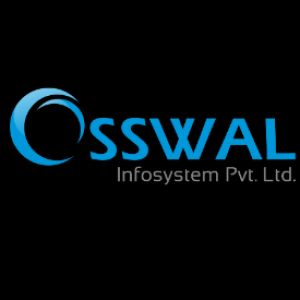Ways Your Business is suffering without an ERP softwarePosted by osswalinfo on January 28th, 2021 Enterprise resource planning (ERP) solutions are changing organizations. By connecting data, systems, and users on an integrated platform, ERP technologies benefit complex organizations by simplifying processes and improving collaboration. If your company hasn't invested in ERP software yet, now is the time. Without an ERP solution, your company is likely to suffer from inefficiencies, costly and outdated systems, and lost customer opportunities. ERP software is a software suite that integrates basic business operations including accounting, finance, human resources, production, distribution, sales and marketing, and human resources. Here are 9 ways in which your business suffers without an ERP implementation: 1. Not Centralized Processes Too often, organizations use a software program to track and record information, while accounting teams use another software solution, and human resources use another solution. As a result, organizational processes are disjointed and unrelated. With an ERP software, processes are centralized, which means there is a single source of information and interactions. ERP solutions eliminate the need for multiple front-end and back-end systems while providing a single source of information, reporting, and analysis. 2. Faulty Decision Making Too many organizations suffer from data silos that prevent information from being accessed by other parts of the company. Without a collaborative approach, organizations cannot easily share information and communicate effectively. production and distribution, to make the right decisions, you need a system that connects all points and provides you with the latest information. ERP software facilitates better communication and data sharing, leading to more effective and smarter decisions when you need them. 3. There are several software systems Many companies suffer from outdated legacy software systems. Why was so much invested in these systems, many of which had to be customized through customizations, software coding, or third-party add-ons. The cost often means executives are reluctant to use these older programs, but they typically involve manual entry and re-entry, costly workarounds and tradeoffs, and tradeoffs inefficiency. Replacing these myriad systems with a single integrated ERP technology means more efficient processes and fewer workaround costs. 4.Difficult Accounting & Financial Processes If your business still relies on paper invoices and sales orders, you likely waste hundreds of hours a year on manual data entry. It's also likely that your accounting and sales departments are often out of sync when it comes to customer relationships, with sales, rebates, bills, and late payments. ERP allows your accounting team to automate many manual processes. Financial reporting can also suffer without the ERP option installed. Comparing financial accounts across multiple spreadsheets and programs makes it much harder to get a clear financial picture. ERP software puts all your financial information in one common database, which can make your accounting team more productive, accurate, and transparent, and the information is quickly available. 5. It takes too long to get information Speed is important in every company these days. To maximize profits and take advantage of new business opportunities, your company needs quick access to information. With older legacy systems, it is much more difficult to extract, organize, report, and use data effectively. ERP helps you get a holistic view of your company and enable your employees to access the right information at the right time to work efficiently. 6. Inaccurate Inventory Management Your supply chain should be visible and available, with up-to-the-minute information on suppliers, materials, and inventory rates. This information helps with reordering, production scheduling, customer service, and accounting. However, mismanagement inventory still depends. In spreadsheets and manual files, it means your business is struggling. Inventory management tools are a common component of ERP solutions, providing your business with accurate information about available materials, in transit, and need of reordering. When inventory information is easily integrated with customer relationships, sales, and production data, there is better communication and results. When accounting knows upcoming purchases, customer service can better handle inquiries with accurate answers, and sales teams can quote prices and terms with precision. 7. IT teams are struggling When your IT team has to operate multiple systems, your business suffers. For legacy ERP systems, teams must stay abreast of the various solutions, updates, features, and maintenance issues for each software package they deploy. With integrated single-source technology, you can reduce IT staff requirements, allowing them to focus on more critical projects. With cloud ERP solutions, many updates are downloaded and installed automatically, ensuring security updates are added immediately. 8. Mobile access to information is irregular As employees increasingly work remotely, there is a need to access information from remote locations, which means having solutions to access mobile devices on different operating systems while working on home and public WiFi networks. Make sure your ERP solution offers apps that work well on smartphones, tablets, and non-business networks. 9. Compliance remains a problem Today, many businesses are bound by improved data privacy and security requirements ERP software enables accurate tracking and reporting of the information needed to stay compliant with federal, state, local, and international jurisdiction mandates. Osswal Infosystem Pvt. Ltd. offers a broad portfolio of products and services covering enterprise software, consulting, infrastructure, implementation, development, and support. The SAP Business One software solution integrates functional business functions for the entire enterprise, including financial management, purchasing, sales, distribution, customer service management (CRM), inventory management, production, project management, and field service. the need for separate point solutions and the complicated integration of multiple modules. You can install SAP Business One on a server or in the cloud. Like it? Share it!More by this author |


